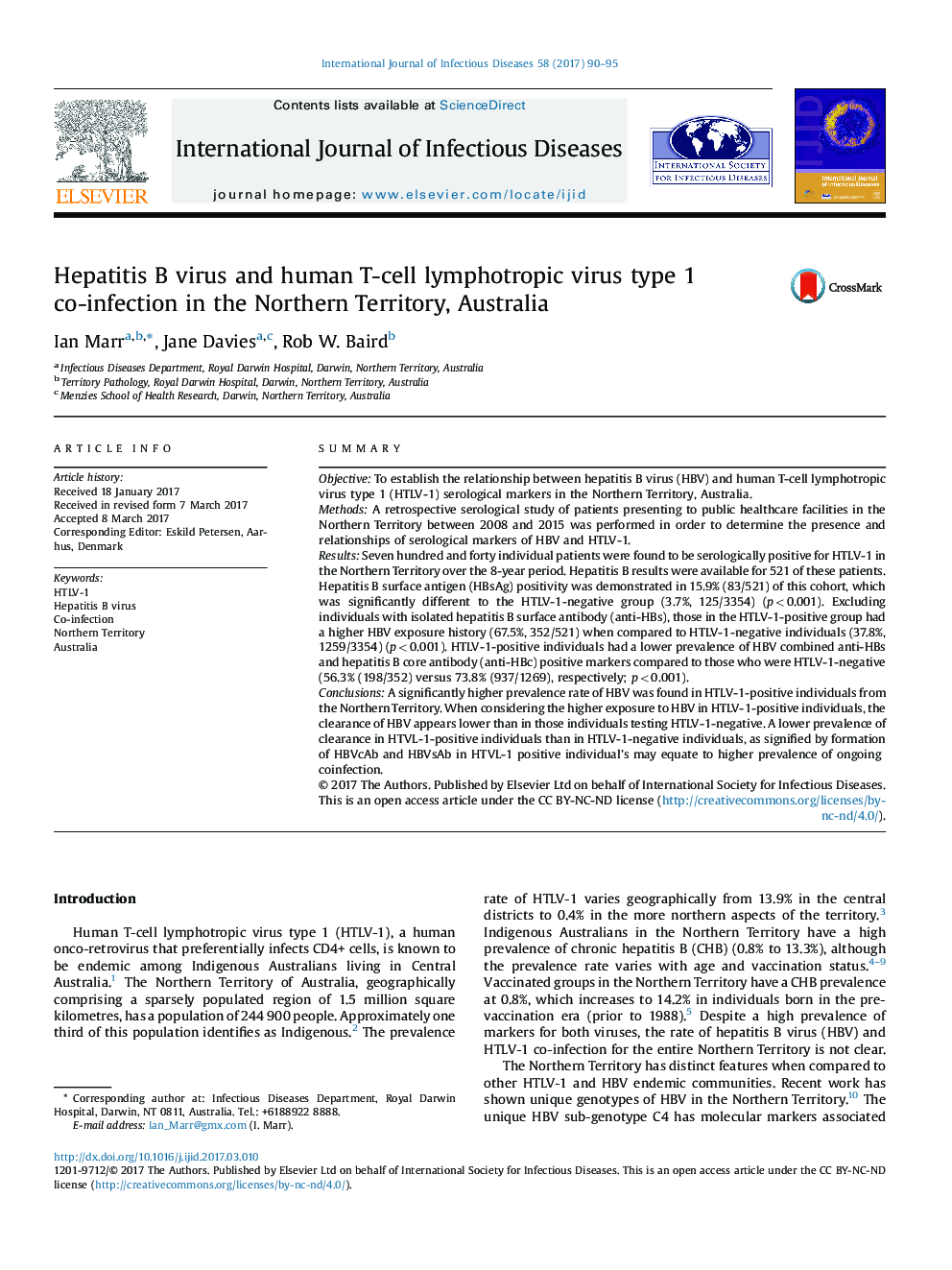| کد مقاله | کد نشریه | سال انتشار | مقاله انگلیسی | نسخه تمام متن |
|---|---|---|---|---|
| 5667538 | 1592035 | 2017 | 6 صفحه PDF | دانلود رایگان |

- The prevalence of human T-cell lymphotropic virus type 1 (HTLV-1) and hepatitis B virus (HBV) co-infection remains to be determined in any of the global HTLV-1 clusters.
- The Northern Territory of Australia has a high prevalence of HBV and HTLV-1 that varies geographically.
- This study describes HTLV-1-positive patients in the Northern Territory with high HBV exposure and lower rates of clearance when compared to HTLV-1-negative individuals.
SummaryObjectiveTo establish the relationship between hepatitis B virus (HBV) and human T-cell lymphotropic virus type 1 (HTLV-1) serological markers in the Northern Territory, Australia.MethodsA retrospective serological study of patients presenting to public healthcare facilities in the Northern Territory between 2008 and 2015 was performed in order to determine the presence and relationships of serological markers of HBV and HTLV-1.ResultsSeven hundred and forty individual patients were found to be serologically positive for HTLV-1 in the Northern Territory over the 8-year period. Hepatitis B results were available for 521 of these patients. Hepatitis B surface antigen (HBsAg) positivity was demonstrated in 15.9% (83/521) of this cohort, which was significantly different to the HTLV-1-negative group (3.7%, 125/3354) (p < 0.001). Excluding individuals with isolated hepatitis B surface antibody (anti-HBs), those in the HTLV-1-positive group had a higher HBV exposure history (67.5%, 352/521) when compared to HTLV-1-negative individuals (37.8%, 1259/3354) (p < 0.001). HTLV-1-positive individuals had a lower prevalence of HBV combined anti-HBs and hepatitis B core antibody (anti-HBc) positive markers compared to those who were HTLV-1-negative (56.3% (198/352) versus 73.8% (937/1269), respectively; p < 0.001).ConclusionsA significantly higher prevalence rate of HBV was found in HTLV-1-positive individuals from the Northern Territory. When considering the higher exposure to HBV in HTLV-1-positive individuals, the clearance of HBV appears lower than in those individuals testing HTLV-1-negative. A lower prevalence of clearance in HTVL-1-positive individuals than in HTLV-1-negative individuals, as signified by formation of HBVcAb and HBVsAb in HTVL-1 positive individual's may equate to higher prevalence of ongoing coinfection.
Journal: International Journal of Infectious Diseases - Volume 58, May 2017, Pages 90-95